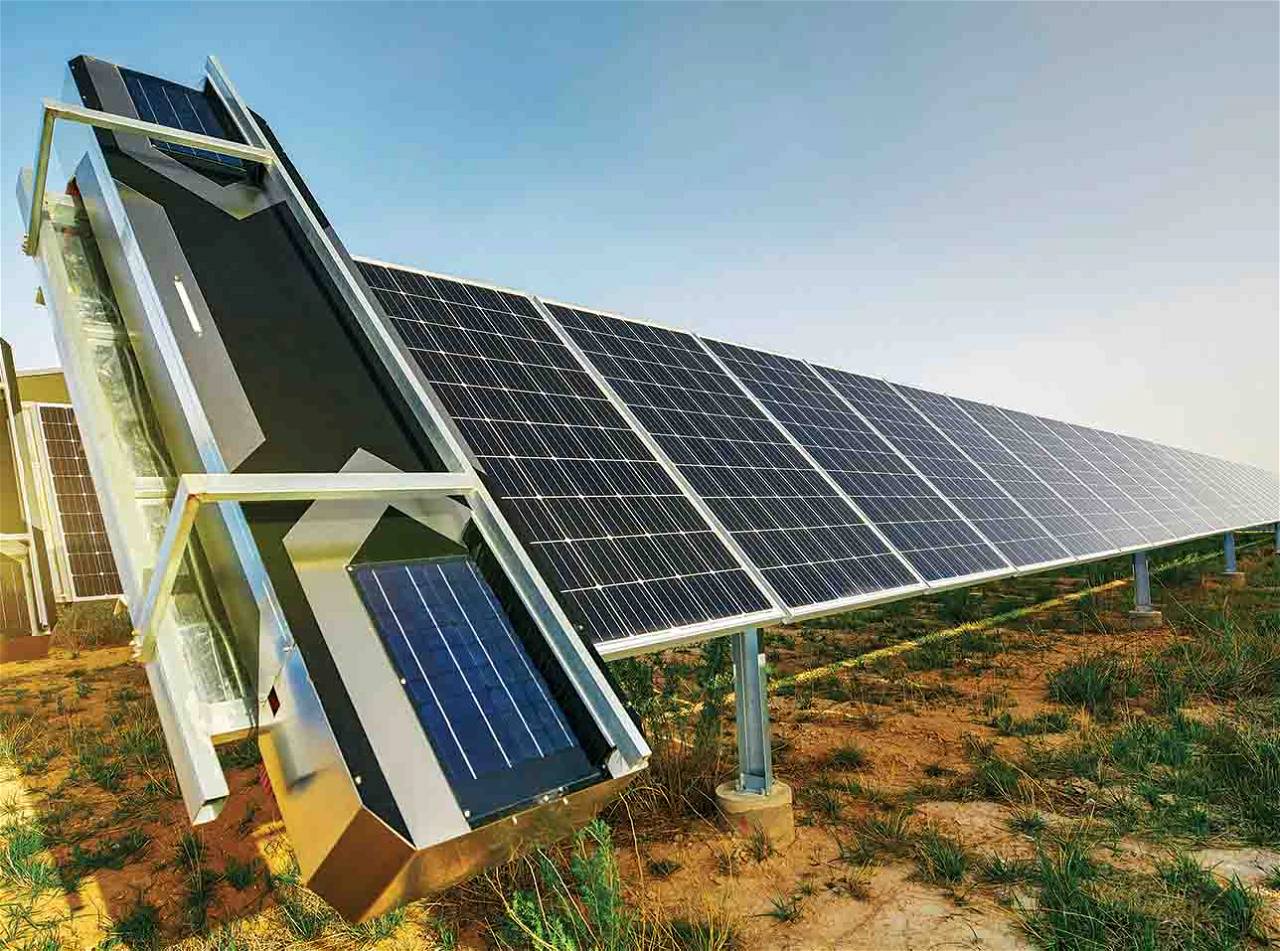
Solar power is expected to account for 10% of global electricity generation by 2030, with much of it concentrated in desert areas where sunlight is abundant. However, dust accumulation on solar panels or mirrors is already a significant issue- it can reduce the output of photovoltaic panels by up to 30% in just one month- so such installations require regular cleaning.
However, it is estimated that cleaning solar panels consumes about 10 billion gallons of water per year, which is enough to supply drinking water to up to 2 million people. Attempts at waterless cleaning are time-consuming and often result in irreversible surface scratching, which reduces efficiency.
Water-less Cleaning System:
A group of MIT researchers has developed a waterless, no-contact system for automatically cleaning solar panels or solar thermal plant mirrors, which they claim could significantly reduce the dust problem.
Without the use of water or brushes, the new system causes dust particles to detach and practically leap off the panel's surface. A simple electrode passes just above the solar panel's surface to activate the system, imparting an electrical charge to dust particles, which are then repelled by a charge applied to the panel.
A simple electric motor and guide rails along the side of the panel allow the system to be operated automatically. Sreedath Panat, an MIT graduate student, and Kripa Varanasi, a professor of mechanical engineering, published a paper in the journal Science Advances today.
"A mundane problem like dust can actually put a serious dent in the whole thing," Varanasi says, despite concerted efforts around the world to develop ever more efficient solar panels. Panat and Varanasi's lab tests revealed that the loss of energy output from the panels begins abruptly at the start of the dust accumulation process and can easily reach 30% reduction after just one month without cleaning.
They calculated that a 1% reduction in power could result in a $200,000 loss in annual revenue for a 150-megawatt solar installation. According to the researchers, a 3% to 4% reduction in solar plant output would result in a loss of $3.3 billion to $5.5 billion globally.
Varanasi says, "There is so much work going on in solar materials." "They're pushing the envelope, trying to improve efficiency by a few percent here and there, and here you have something that can obliterate all of that right away."
Many of the world's largest solar power plants are in desert areas, including those in China, India, the United Arab Emirates, and the United States. Water for cleaning these solar panels with pressurized water jets must be trucked in from afar, and it must be extremely pure to avoid leaving deposits on the surfaces.
Dry scrubbing is occasionally used, but it is ineffective at cleaning the surfaces and can result in permanent scratching, which reduces light transmission. Solar installations' water cleaning costs account for about 10% of their total operating costs. According to the researchers, the new system could potentially lower these costs while increasing overall power output by allowing for more frequent automated cleanings.
"The solar industry's water footprint is mind-boggling," Varanasi says, adding that it will continue to grow as these installations spread around the world. "As a result, the industry must be extremely cautious and thoughtful about how to make this a long-term solution."
Other groups have attempted to develop electrostatic-based solutions, but they have relied on an electrodynamic screen made up of interdigitated electrodes. According to Varanasi, these screens can have flaws that allow moisture in and cause them to fail. While they might be useful on a planet like Mars, where moisture isn't an issue, he says they can be a serious problem even in desert environments on Earth.
The new system requires only that an electrode, which can be a simple metal bar, pass over the panel, creating an electric field that charges the dust particles as it passes. The particles are repelled by an opposite charge applied to a transparent conductive layer just a few nanometers thick deposited on the glass covering of the solar panel, and the researchers were able to find a voltage range sufficient to overcome gravity and adhesion forces and cause the dust to lift away by calculating the right voltage to apply.
In practice, each solar panel could be outfitted with railings on both sides, with an electrode spanning the entire panel. A small electric motor, possibly powered by a small portion of the panel's output, would drive a belt system to move the electrode from one end of the panel to the other, causing all the dust to fall away.
The entire process could be automated or remotely controlled. Instead of moving parts, thin strips of conductive transparent material could be permanently arranged above the panel. Such systems have the potential to significantly improve the overall efficiency and reliability of solar installations by eliminating the need for trucked-in water, reducing dust build-up that can contain corrosive compounds, and lowering overall operational costs, according to Kripa Varanasi.
(Source: MIT)
















